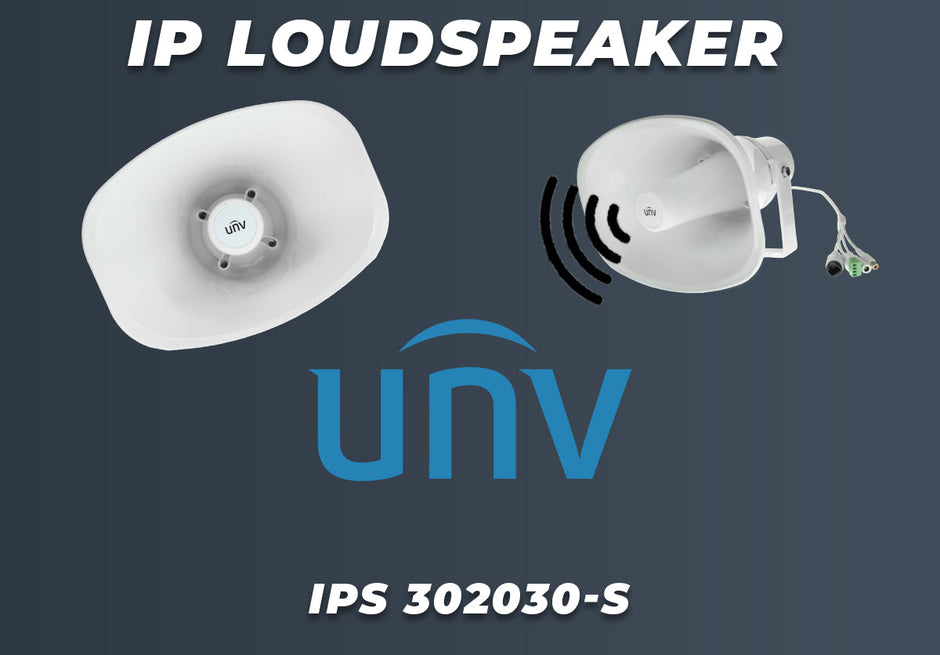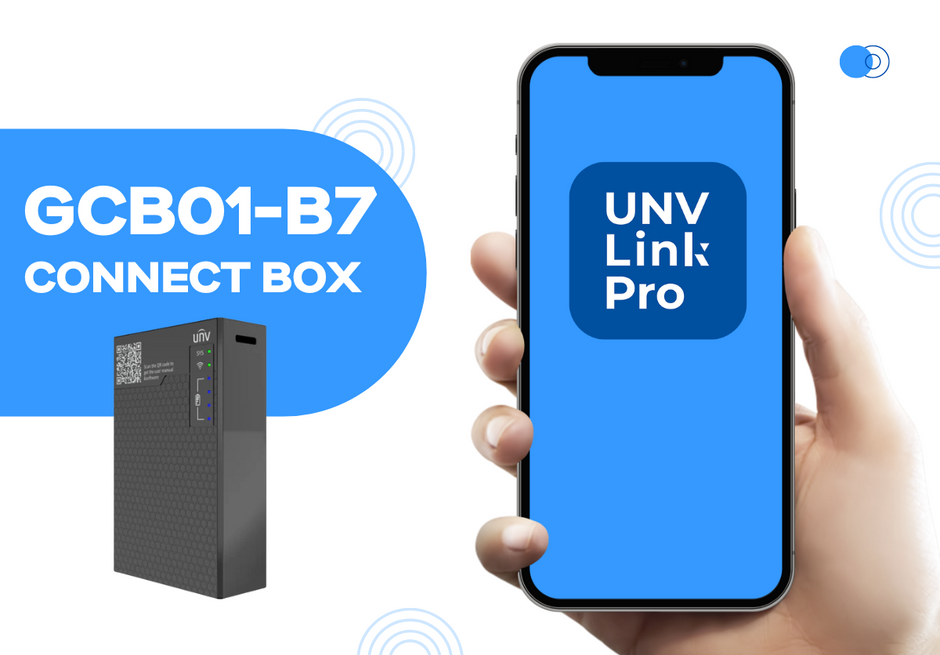One Simple Question
In this blog post, we just have one simple question for you. You're installing our cameras and our alarm panels. Why aren't you installing our access control products? Sure, it may sound scary at first. But it's really not as bad as it sounds. Are you interested in getting started with Access Control, but you're not quite sure where to begin? Well lucky for you, this blog post and the video below are here to help walk you through everything you need to know to get started. Let's go ahead and jump in!
If you're brand new to access control, you probably have a lot of questions. Why should I even install access control? What products do I need to get started? How do you even wire an access control system? Let's take these questions one step at a time.
"Why Should I Install Access Control?"
Access control really is ideal for almost any small business scenario. Chances are you're probably already installing our cameras in small businesses, and maybe even our alarm panels. Opening up your security business to include access control can provide you even more opportunities to serve your current loyal clients and even bring in some new business.
Why would a small business owner be interested in access control?
- Have you ever wanted to track when people come in and out of your building, or when people access certain parts of your building? With access control, you can easily keep track of all these statistics. But as the name implies, these products not only allow you to track access. They allow you to take control of it.
- So, do you want to grant access to your building without having to hand out keys? Done. This saves you the hassle of having to copy new keys every time you hire a new employee, only to change the locks the next time a former employee forgets to return their key. Besides, keys have no concept of time. If an employee has a key to your building, they'll have 24/7 access. Maybe you only want them to have access to your building during their shift. With access control, you can do that no problem.
- Do you want certain doors to automatically lock or unlock during certain times of the day, such as during opening or closing time? With access control, you can set up an automatic schedule and let your doors lock and unlock themselves. You'll never again have to go home at the end of the day wondering if you left any doors unlocked.
- Do you want to grant access to certain areas to certain people? Instead of installing different locks on different doors and making sure each employee has keys to the doors that pertain to them, replace your locks with our access control products. Then control everything in one convenient place using your computer or your cell phone.


If all of that doesn't pique your interest in access control, then maybe this will. These products are very cost-efficient, especially when compared to other access control products on the market. For the amount of features that you get out of these systems, you're paying an excellent price.
Now that you know why you should be installing our access control products, you may be asking the question, "Where do I start?" That's the question we'll be exploring throughout the rest of this blog post
"What Products Do I Need In Order to Install Access Control?"
This really is a great question. But there's not really a one-size-fits-all solution. This may not be the answer you want to hear, but it really is up to your specific circumstances. However, no matter how big or small your system is, all AC systems will have these simple components: some sort of lock to deny access, some sort of key to grant access, and a board that controls it all.
Access Control Locks: Denying Access
There are actually and endless supply of door-locking options. We do have some of the basics at Nelly's Security, but keep in mind that if your situation calls for something else, there are electronic locks virtually all over the internet.
Here are some of the options that we carry.
Magnetic Locks

This type of lock uses a very strong magnet to lock the door in place, keeping anyone out that doesn't have access. They simply screw into place on your door or door frame. So if you're looking for a simple and effective way to lock your doors without doing much damage, this may be the lock for you.
VIEW PRODUCTElectric Strikes

This lock type works with your door's mechanical lock or knob lock. It replaces the fixed strike in the door frame and then allows the door to open or remain locked, depending on the commands it receives. It is a bit more difficult to install than a mag lock, but it's more secure.
VIEW PRODUCTOne thing to keep in mind when picking out your lock is security. The magnetic lock only keeps doors locked if it's receiving power. That means if the power goes out, your doors will no longer be locked. Electric strikes, on the other hand, can act as a mechanical door strike. If the power goes out, these locks can continue to keep doors locked. To get into the room, then, you'd need a physical key.
Again, there are many other door locking options. From battery-powered, standalone locks that are essentially self-contained AC systems all packed into your doorknob. To electronic deadbolts, shear locks, and more. If you have any questions about what type of lock you might need, give us a call and we can walk you through it.
Access Control Keys: Granting Access
Now that you've picked out the lock you're going to use to secure your doors and prevent access, it's time to select your method of allowing access to certain individuals. Again, this can be done a few different ways.
Proximity Cards and Readers

This is probably the most popular option for granting access in an AC system. Simply place a proximity card reader next to the locked door. When someone holds up a proximity card to the reader, they are either granted or denied access.
VIEW PRODUCTSKey Pad

A keypad is an even simpler method of allowing a person into a restricted area. All they need to do is input their credentials into the keypad and they're free to open the door, assuming their credentials were correct.
VIEW PRODUCTPush-to-Exit Button

A push-to-exit button, unlike the previous two products, is placed on the inside of the restricted area. Request to Exit (REX) allows people to exit the room without credentials.
VIEW PRODUCTSSo far it's not looking so scary, is it? Just like a mechanical locking system, access control pretty much consists of a lock and a key. Just a fancier lock and key than you may be used to.
But there's one crucial aspect to an access control system that we haven't talked about yet, and it's what holds everything together and gives you control over the entire system.
AC Boards: Controlling Access
AC controller boards come in many brands, shapes, and sizes. Some come packed with more features than others. If this is your first time setting up Access Control, then you can't go wrong with ZKTeco's Atlas Series access control boards. We sell these in a one-door, two-door, or four-door kit. If you buy one of these kits, all you need to provide is the door locks and wiring, we've got you covered with the rest. They come with push to exit buttons and card readers for each door.

Everything you install on your door, you’ll run wires to your access controller board. Your door lock, your proximity reader, your push-to-exit button. You’ll be able to access and control this board, and everything that's connected to it through the interface on your computer or your cell phone.
Now you know why you need access control. You know what kind of products you need to get started. Now let's move on to the next question: how do you install access control?
"How do I Install Access Control?"
You may not know how to wire an AC system, and you may not feel comfortable cutting and drilling into doors and door frames. That’s totally fine. It’s not as difficult as you might think, and you don't necessarily have to do it by yourself. Let's run over the steps involved in setting up an Access Control system.
Mounting the Hardware
First you'll want to prepare for mounting your hardware, including the door lock, the proximity reader, the push-to-exit button, and any other products you may have.
In the video above, we installed the mag lock and drilled holes for the proximity reader on the outside of the door and the push-to-exit button on the inside of the door.
Mag locks are probably the easiest locks to install, as you simply screw them into your door and door frame. But as I said before, there are many electric lock available for you to choose from, and they're not all going to be this easy to install. If you aren't comfortable with cutting into doors, or if you're concerned about violating building codes, it may be a good idea to contract with a good locksmith in y our area. Let them install the locking hardware while you simply focus on running the wiring and configuring the AC board. And of course, we can help you with any technical assistance you may need.



Now it's time to run wires from each piece of hardware to the controller board.
Running the Wires
There's no need to be wary about a wiring system that you may not be used to. Your board will come with an installation guide with detailed instructions and wiring diagrams. Take a look at some of these diagrams below.
Wiring the Mag Lock
Wiring the magnetic lock to the ZKTeco board requires an extra step, since there's no integrated power supply. This means you need to wire the lock both to the board and to an external power supply.
Wiring the Proximity Reader
The ZKTeco board takes both and OSDP readers. You will need to wire your proximity reader differently depending on which type of reader you have. In this example, we used a reader.
REX Button
Wiring the push-to-exit button is pretty straightforward. Keep in mind that there are a couple of different methods of request to exit. If you're using a PIR sensor instead of a button, the wiring process is going to look a bit different. Again, just follow the diagrams and everything will be fine!
Powering Up The Board
Alright, everything's wired and there's only one thing left to do: provide the board with access to power and to the network. With the ZKTeco Atlas board, this can be done in one fell swoop with Power over Ethernet (PoE). Simply connect your board to a PoE switch using an Ethernet cable and it will immediately turn on and connect itself to your network.

The Finished Product
Take a look at the images below to get an idea of what the board looks like once everything is wired, powered up, and ready to go.




Configuration
Everything is now physically set up. However, you're not done yet! You still need to configure the board and all of its hardware so that you and your clients can control the whole system. Once again, this is much easier with the ZKTeco Atlas series than it is with other controllers. That's because these boards have a built-in web-based application. Using your favorite internet browser, you can configure everything in just a few minutes without having to mess with a bulky and expensive third party management program.
Using the configuration tool (which you can find here), find the IP address of your panel and log into the web interface just as you would with a camera or a recorder.
From the main page you have a live monitor view, where you can see all the events taking place on your AC system. When a door is opened, a card is scanned, access is granted or denied, someone logs in, someone tampers with your system, or anything else, you'll be able to get live updates here.
In the menus you can create doors and users. Then you can set up automatic locking schedules for each door. You can give users access to certain doors at certain times. You can design custom cards and maps, configure areas, download reports, and so much more. There is a ton of features available to you through this interface, but that goes beyond the scope of this blog post. If you have any questions at all, feel free to reach out to us and we'd be happy to help you out.
You can also view, monitor, and control your AC system through the ZKTeco Atlas mobile application for iPhone and android. There is no P2P set up by default, so you won't be able to access your system unless your device is connected to the same network. However, you can set up P2P if you'll need to use the mobile app remotely.

Final Thoughts
I hope this blog post helped you see that Access Control isn't as scary as it sounds. It's actually pretty easy. More than that, it's something that could really be useful for you and your customers. If you're already installing our cameras and alarm panels, this is something you should really look into. Before you go, check out the video below to see a brief demo of the ZKTeco Atlas AC system at work. You'll see me granting myself access through the interface, using a proximity card to enter a restricted area, and using a push-to-exit button to leave the restricted area. Watch as the Atlas interface monitors each step of the process.





















